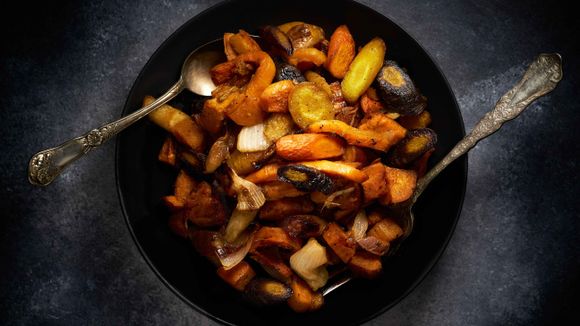Benefits for Specific Health Conditions and Diseases
- Diabetes: A personalized diet plan can help diabetics manage their blood sugar levels more effectively. Research has shown that customizing meal plans based on an individual's unique needs can lead to better glycemic control, potentially reducing the need for medications (1).
- Heart Disease: Tailoring a diet to accommodate individual risk factors, such as high blood pressure or high cholesterol, can be beneficial in preventing heart disease. A study published in the American Journal of Clinical Nutrition found that personalized nutrition advice led to healthier dietary habits, which reduced cardiovascular risk factors in participants (2).
- Weight Management: A tailored diet plan can help individuals achieve and maintain a healthy weight. Research has shown that personalized nutrition counseling led to greater weight loss and better long-term weight maintenance compared to standard nutrition advice (3).
- Digestive Issues: Those with digestive disorders, such as irritable bowel syndrome (IBS) or inflammatory bowel disease (IBD), may benefit from a personalized diet plan. A study published in the journal Nutrients found that an individualized diet based on food sensitivity testing helped reduce symptoms in participants with IBS (4).
- Allergies and Food Sensitivities: Customizing a diet to exclude allergens or irritants can help prevent adverse reactions in those with food allergies or sensitivities. An elimination diet, which involves avoiding potential triggers for a set period, can be tailored to an individual's needs to help identify and manage food-related issues (5).
(1)Zeevi, D., Korem, T., Zmora, N., Israeli, D., Rothschild, D., Weinberger, A., ... & Segal, E. (2015). Personalized nutrition by prediction of glycemic responses. Cell, 163(5), 1079-1094. (2)Celis-Morales, C., Livingstone, K. M., Marsaux, C. F., Macready, A. L., Fallaize, R., O'Donovan, C. B., ... & Mathers, J. C. (2017). Effect of personalized nutrition on health-related behaviour change: evidence from the Food4Me European randomized controlled trial. The American journal of clinical nutrition, 105(3), 827-836. (3)Gardner, C. D., Trepanowski, J. F., Del Gobbo, L. C., Hauser, M. E., Rigdon, J., Ioannidis, J. P., ... & King, A. C. (2018). Effect of low-fat vs low-carbohydrate diet on 12-month weight loss in overweight adults and the association with genotype pattern or insulin secretion: the DIETFITS randomized clinical trial. JAMA, 319(7), 667-679. (4)Atkinson, W., Sheldon, T. A., Shaath, N., & Whorwell, P. J. (2004). Food elimination based on IgG antibodies in irritable bowel syndrome: a randomised controlled trial. Gut, 53(10), 1459-1464. (5)Skypala, I. J., & Venter, C. (2014). Food intolerance and allergy: increased incidence or modern phobia?. Proceedings of the Nutrition Society, 73(1), 8-14.

Photo by Christina Rumpf on Unsplash
Two delicious homemade recipes
Quinoa and Roasted Vegetable Salad
Ingredients:
- 1 cup quinoa, cooked according to package instructions
- 2 cups mixed vegetables (e.g., bell peppers, zucchini, cherry tomatoes), chopped
- 1 tablespoon olive oil
- Salt and pepper, to taste
- 2 tablespoons lemon juice
- 2 tablespoons fresh parsley, chopped
Instructions:
- Preheat oven to 400°F (200°C).
- Toss chopped vegetables with olive oil, salt, and pepper. Spread on a baking sheet and roast for 15-20 minutes, or until tender.
- In a large bowl, combine cooked quinoa, roasted vegetables, lemon juice, and parsley. Toss well and serve.

Photo by Louis Hansel on Unsplash
Chickpea and Spinach Curry
Ingredients:
- 1 tablespoon olive oil
- 1 onion, diced
- 2 garlic cloves, minced
- 1 tablespoon curry powder
- 1 can (15 oz) chickpeas, drained and rinsed
- 1 can (14.5 oz) diced tomatoes
- 4 cups fresh spinach
- Salt and pepper, to taste
Instructions:
- In a large saucepan, heat olive oil over medium heat. Add onion and cook until softened, about 5 minutes.
- Add garlic and curry powder, and cook for 1 minute.
- Stir in chickpeas and diced tomatoes. Simmer for 10 minutes.
- Stir in spinach and cook until wilted, about 3 minutes. Season with salt and pepper to taste. Serve over rice or with whole-grain bread.
Questions and Answers
Q: Can the Flexibility Diet help with autoimmune diseases?
A: While this article does not specifically address autoimmune diseases, a personalized diet plan may help manage symptoms and improve overall health for individuals with autoimmune conditions. Consulting with a registered dietitian or nutritionist is recommended to develop a tailored plan based on your needs.
Q: Is the Flexibility Diet suitable for vegetarians and vegans?
A: Yes, the Flexibility Diet can be adapted to accommodate various dietary preferences, including vegetarian and vegan diets. The key is to ensure that your diet is well-balanced and meets your individual nutritional needs.
Q: How can I determine my unique nutritional needs?
A: Consulting with a registered dietitian or nutritionist can help you determine your specific nutritional needs based on factors such as age, sex, weight, activity level, and any existing health conditions. Blood tests and other assessments may also be used to guide personalized recommendations.
Q: How can I track my progress on the Flexibility Diet?
A: Keeping a food diary, monitoring changes in your health markers (e.g., blood sugar levels, cholesterol), and tracking your weight can help you assess your progress on the Flexibility Diet. Regular check-ins with a healthcare professional can also provide valuable feedback and guidance.
Q: Are there any risks associated with the Flexibility Diet?
A: As long as your personalized diet plan is well-balanced and meets your nutritional needs, there should be minimal risks associated with the Flexibility Diet. However, it's essential to work with a healthcare professional to ensure that your dietary plan is safe and appropriate for your unique needs.









